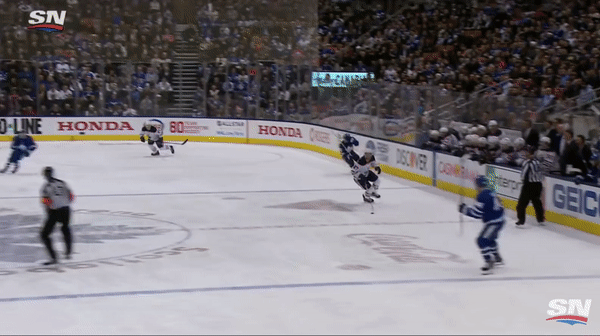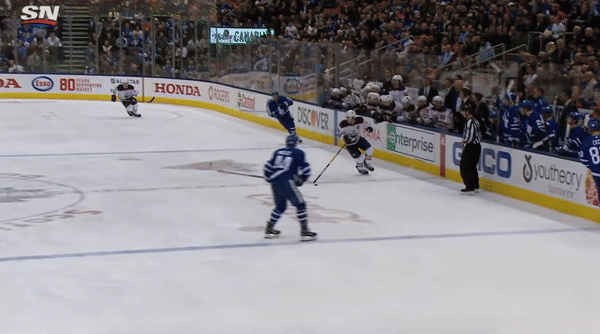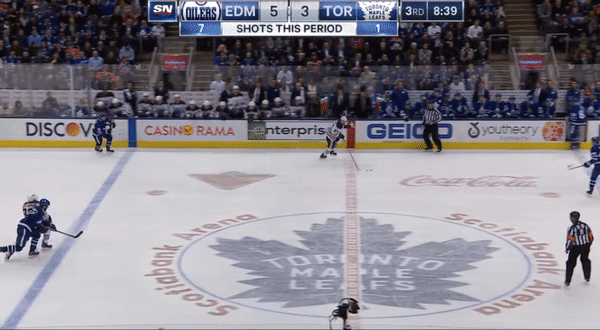Each week, stickhandling specialist Pavel Barber and Sonny Sachdeva will go Inside the Highlight Reel to break down one of the silkiest moves from the NHL’s best, dissecting it to explain why it’s so dangerous and demonstrating how to master it yourself.
After what seems like an eternity, the sports world has begun its slow return. But with hockey having yet to join that equation, the task at hand for players around the country who saw their seasons suspended remains staying safe at home and finding any means of fine-tuning skill-sets during the downtime.
That being the case, we called on stickhandling specialist Pavel Barber to share his expertise. The YouTube phenom-turned-skills coach has made his name dissecting the finer points of offensive wizardry — while amassing half a million followers online, the Toronto native has trained NHLers like Jonathan Toews and Jake Virtanen, and recently linked up with Bo Horvat and the Vancouver Canucks to coach some local Vancouverites.
Each week, Barber and I will break down one highlight-reel move from one of the game’s best, and offer up a demonstration for aspiring danglers looking to master these game-breaking moves themselves (watch Barber’s tutorial in the video at the bottom of this post).
This week, we’re looking at the bit of deception Connor McDavid used to fool Morgan Rielly and Michael Hutchinson earlier this year.
Investigating the finer aspects of McDavid’s game is like taking a magnifying glass to a circuit board. The more in-depth you search, the more complexities you’re bound to find.
But in this particular play against the Maple Leafs, much of what comprises No. 97’s skill-set is on display all at once — a string of decisions and movements that highlight the Oilers captain’s ability to misdirect, to burn opponents with speed, and to elude netminders with quick hands that need little space to make an impact.
It all begins and hinges on something incredibly simple, though.
“What McDavid does so well on this play is he looks off in the opposite direction he intends to go,” Barber says. “What this does is it gives the defender the impression that he’s going to make a play there, be it a pass or driving wide.”
McDavid uses his whole body to convince Rielly he’s waiting on Ryan Nugent-Hopkins and considering dishing to his teammate. Forget the fact that the latter Oiler is miles behind McDavid and surrounded by blue jerseys — regardless of what Rielly’s instincts tell him of the chances McDavid is going to somehow cut towards the cage, he has no choice but to respect how No. 97 is moving, and where he’s looking, while the centreman lays his trap.
Look at the play from the goaltender’s perspective and you get a better sense of how McDavid convinces Rielly he’s gearing up for a pass to a phantom linemate — entering the zone, he doesn’t take that open space down the wing but cuts inside so far towards the middle of the ice, he’s almost skating parallel with the blue line for a moment, not only looking away from the direction he’ll soon cut to, but nearly turning back to centre ice to spy Nugent-Hopkins.
Once you’ve seen the entire play, the final result seems the obvious conclusion. But here’s what Rielly sees before the cut-back that ultimately sinks him:

“I always talk about body language in terms of mastering the art of deception, and you can see that from where he’s looking, his hand position and momentum — everything is signifying that he’s going to continue in that direction.”
Next up in the sequence is the cut-back, which we’ve seen McDavid use in different forms before to devastating effect.
“He then does a quick weight shift to the outside leg and catches Rielly in a crossover to cause the separation,” says Barber. “McDavid crosses over out of the hard cut to accelerate out of the move to keep his distance, then finishes it off with that backhand-forehand, strong-side shot he’s well known for.”
This is where McDavid’s all-world speed is a game changer, and where we see the versatility in its value . The end-to-end rushes are one thing, where defenders see the galloping begin and at least have some time to map out a momentary plan to obstruct his path up ice. But here, in situations where there’s only a moment to react, the separation created by his acceleration is the difference between being able to disrupt a shot and simply watching him move on to dismantle Michael Hutchinson.
Now, here’s the rest of that play, starting with the same angle as above:

Elite misdirection, elite speed, elite hands.
But there’s another key aspect at play here too, explains Barber — McDavid’s trust in the effectiveness of that initial deception.
“He’s not waiting for the defender to move,” Barber says. “He’s anticipating his movement based on his fake. He’s trusting his move to stay one step ahead of his opponent.”
It seems like a simple enough approach, and fundamentally it is — McDavid lays a trap that he knows will grant him a moment of space, and in that half-second it takes for his opponent to adjust, he exploits it. But it all hinges on commitment — first, to wholeheartedly selling that potential pass, and second, to following through on the move based on anticipation and not reaction, as Barber says.
Another look at the play from a few alternate angles makes clear how well McDavid sells that pass option, even though there’s really no way to effectively get the puck back to Nugent-Hopkins given how far behind the play he is.

For those honing their skills at home and looking to add this bit of McDavid deception to their arsenal, we asked Barber to demonstrate the sequence, explaining how to pull it off with maximum effectiveness and offering up a drill that’ll help build the skills to do it.
Watch Pavel Barber’s tutorial on how to master the art of on-ice deception like McDavid:
[relatedlinks]









